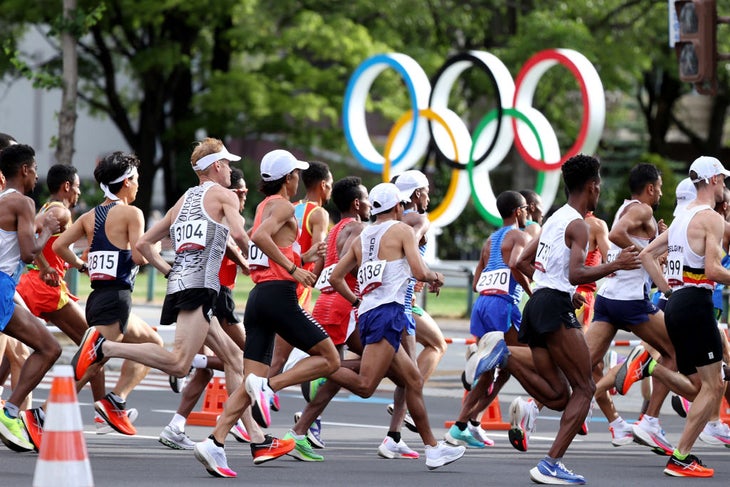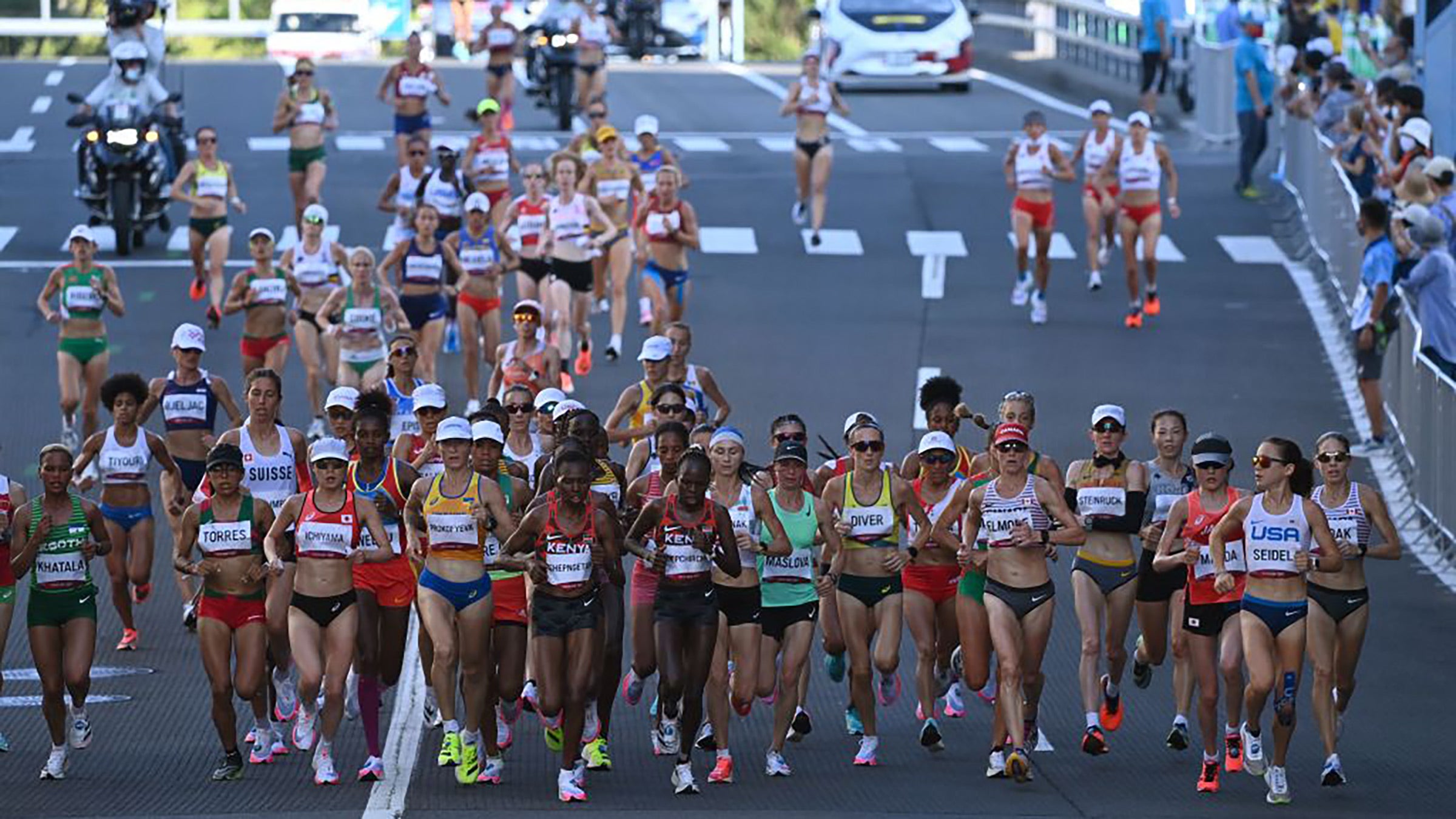The marathon is an arduous, complex physical and mental test—one that has never ceased to fascinate me even after I’ve run 26 of them. But I admit that actually watching a marathon isn’t that fun, even at the Olympics.
We see a group of runners go stride-for-stride for a little over two hours as the lead pack dwindles under the painful pace. Runners who fall off the front seem to disappear entirely. It matters little, except for personal pride, if they drop out, or hang on for 13th or 25th place.
Equally out of sight are the dozens of runners who make up the middle and back of the pack, and are never in contention to win. We see these athletes only as they straggle across the finish line during the anticlimactic half hour after the medals are settled. All of the attention is on the few athletes battling for medals.
I have a plan to make every participant in a marathon count, to make every position change significant and interesting, to make every runner a hero. It’s an idea that’s already widely used in running. My plan to fix the marathon is to transform it into a team event that employs the meets.
In cross country—that fall sport where gangly high schoolers run 3.1 miles around golf courses or rural parks—seven runners from each school represent their team. When the gun goes off, everyone starts together. Runners finishing in the top 10 or 15 (depending on the size of the meet) earn individual medals. But these awards are secondary to the team competition. To determine team placings, officials add up the finish position of the top five runners from each school, and the school with the lowest cumulative number wins.
Under this competition format, every runner matters. It’s just as important if the slowest runner on a team moves up two places from 45th to 43rd, as it is if the fastest one advances from third to first. No team can win due to the merits of its star runner. Every participant, from first to last, has to perform well for the team to succeed.

Runners back in the pack, in fact, often have the chance for much larger point swings: a top-10 finisher may get passed by three or four if she slows by 20 seconds, a mid-pack runner could easily slip back, or pass, 15 to 20 places in the same time.
Here’s my plan: we create a national team score for the Olympic marathon. Sure, we still award medals to the three individuals who cross the line at the front. But we also pay attention to how the runners behind them fare, by offering medals to the nations with the cumulative lowest score determined by each runner’s number placing.
Runners who fell off the lead would need to gut it out all the way to the finish—they wouldn’t dare abandon the race and jeopardize a team medal. Team scores—which would be displayed as current standings throughout the race as runners pass checkpoints—would become more competitive as the race went along, bringing the importance of slower runners into focus.
I’d love to see the field expand to seven from each country, or at least five; currently there are just three. But even with three runners per country you could organize a dramatic team competition. I recently re-watched the 2020Tokyo Olympics women’s race and applied my competition concept to the event. Only five points separated the top-three nations: Germany, Australia, and Japan.
Kenya, meanwhile, did not reach the podium.Sure, Kenya’s runners placed first and second, respectively, but its third runner dropped out, eliminating the country from contention. Alas, it was the same fate for the U.S. team—our runners were third, 17th, and DNF.
The Tokyo Olympic Marathon would have produced an edge-of-your-seat team competition. Germany’s first runner placed sixth, Japan’s eighth, Australia’s tenth. Each nation’s second runners were similarly close: Germany’s 18th, Japan’s 19th, Australia’s 23rd. With team totals standing at Germany 24, Japan 27, and Australia 33, the third runner from Australia crossed in 26th for a total score of 59.
As I tallied the score, I realized that a really compelling battle was brewing between each nation’s final runner. This was going on long after the Kenyans had finished first and second. Germany and Japan’s third runners were running two places apart in 31st and 33rd, respectively. Germany, in the lead after the first two runners, just needed to hang on to get gold with 55 points. If Japan’s runner could have passed one competitor, the team would have tied with Australia for silver. If she could have passed four runners, including the German, Japan would have won gold. In the end, the gold medals would have been decided by who finished in 30th place.
In a normal Olympic marathon, whomever finishes 30th is totally inconsequential, just a blurry face in the background as TV cameras focus on the winner. But with my Olympic marathon concept, running fans would need to cheer on every runner and fixate on every position change. We’d yell and scream during each dramatic moment when a runner crossed the line and hugged his or her teammates.
Just imagine this scenario. In my opinion, this would make the Olympic marathon as exciting as a high school cross country meet, which if you’ve ever attended one, you know is an edge-of-your-seat affair. And it might transform the Olympic marathon into a race you need to follow, from the first finisher to the last.


